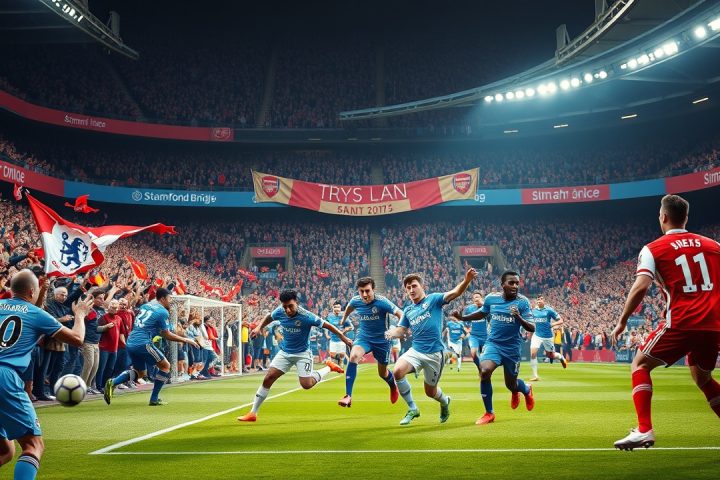Introduction
Across Europe’s elite football leagues, a noticeable shortage of traditional center-forwards has raised eyebrows. Real Madrid recently adapted a winger, Kylian Mbappé, to fill the striking role in the previous season. Similarly, Arsenal utilized attacking midfielder Kai Havertz until he suffered an injury, followed by Mikel Merino, another midfielder. Paris Saint-Germain, champions of the Champions League last season, also transformed a wide player, Ousmane Dembélé, into a center-forward.
Current Landscape of Center-Forwards
While Barcelona possesses Robert Lewandowski—a central striker reaching 37 this summer—Liverpool’s Darwin Núñez frequently finds himself on the bench, often replaced by wide forward Luis Díaz. On the other hand, Bayern Munich’s Harry Kane and Chelsea’s Nico Jackson sit as the only recognized main strikers at their respective clubs, yet both lack strong substitutes.
Transfer Market Dynamics
This situation raises questions about the effectiveness of free market dynamics in solving this shortage. Clubs often gravitate towards the same transfer rumors, primarily centered around Leipzig’s Benjamin Sesko and Sporting’s Viktor Gyökeres, while overlooking potentially viable alternatives. The role of intermediaries in football transfers complicates matters further, with some brokers engaging robustly and others only speaking once a deal is finalized, contributing to a lack of visibility for other options.
Prominent Forwards: Vlahovic and Osimhen
Notably, two prominent forwards have emerged as potential transfers: Juventus’ Dusan Vlahovic and Victor Osimhen of Napoli. Vlahovic, a Serbian international, and Osimhen, who spent last season on loan at Galatasaray, are both 25 and 26 years old, respectively, marking them as young talents with many career years ahead. However, their current contractual situations add layers of complexity to any potential moves.
Osimhen’s Situation
Osimhen joined Napoli in July 2020 from Lille for a staggering €70 million (approximately $80 million), potentially rising to €10 million in bonuses. His performance in Serie A has been impressive—scoring 46 goals in his initial three years, followed by another 48 goals across the 2022-23 and 2023-24 seasons. His tenure at Napoli also saw him lead Nigeria to the Africa Cup of Nations final and earn accolades as Serie A Player of the Year and African Footballer of the Year.
Last season, Napoli intended to transfer Osimhen ahead of the 2024 season, as he had two years left on his contract without an extension. Their strategy included signing Romelu Lukaku as his replacement, signaling Osimhen’s impending exit. However, when no suitable offers materialized, Napoli extended Osimhen’s contract to 2027 and loaned him to Galatasaray, where he enjoyed a prolific season, netting 37 goals in 41 appearances, significantly contributing to their domestic Double.
Vlahovic’s Challenges
Vlahovic, who signed with Juventus on his 22nd birthday in 2022 from Fiorentina, also carries a hefty contract worth €70 million, including potential bonuses. While initially lucrative, his €24 million annual salary has become burdensome for Juventus, a club grappling with financial losses. Juventus attempted to offload Vlahovic last summer, but his high salary deterred potential buyers, leaving the club at a crossroads with merely a year left on his contract.
Despite facing injury issues and inconsistent form—scoring 56 goals in 143 appearances for Juventus compared to 41 in 64 matches at Fiorentina—Vlahovic’s physical presence and talent remain appealing. Both players, Osimhen and Vlahovic, have contracts that present complications for their current clubs but also opportunities for future transfers.
Current Transfer Estimates
Current transfer estimates suggest Osimhen might command €70 million, while Vlahovic could be valued around €45 million, although negotiations could shift these figures. Their substantial salaries, particularly Osimhen’s reported $22 million per year, likely contribute to hesitation among prospective clubs.
Conclusion
Furthermore, the looming World Cup next summer adds urgency for both players to secure opportunities that offer professional fulfillment. While clubs may be demanding high fees, the need to act decisively is pressing for both Napoli and Juventus, lest they risk losing these valuable assets without sufficient financial returns, all while managing costly contracts amidst their operational challenges.
In contrast to their current struggles, both players have aspirations beyond the financial incentives, seeking platforms that showcase their talents on larger stages. With shifting dynamics in the transfer market, their situations could evolve as the landscape changes amidst strategic considerations for the upcoming seasons.




